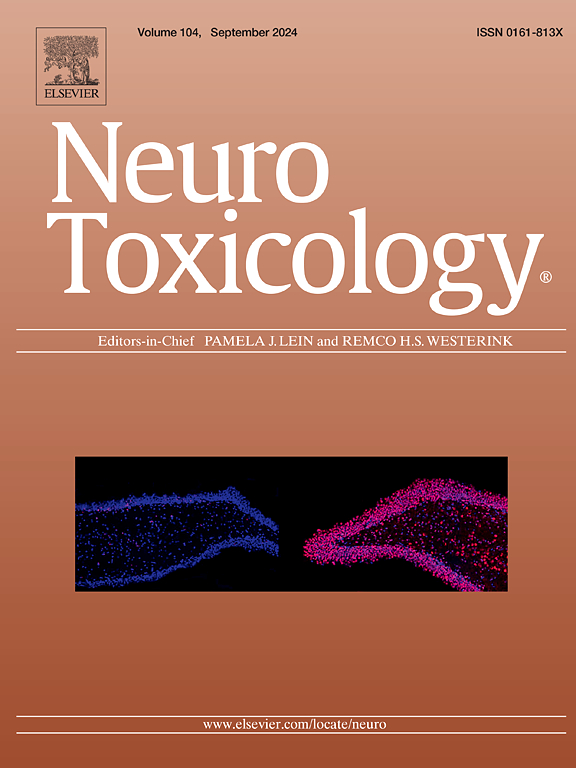Mechanisms of micro- and nanoplastics on blood-brain barrier crossing and neurotoxicity: Current evidence and future perspectives
IF 3.9
3区 医学
Q2 NEUROSCIENCES
引用次数: 0
Abstract
Micro- and nanoplastics (MNPs), as emerging global pollutants, pose increasing threats to ecological environments and human health due to their widespread distribution and potential toxicity. Recent studies have demonstrated that MNPs not only enter the human body through multiple pathways but may also cross the blood-brain barrier (BBB), causing irreversible toxic damage to the central nervous system (CNS). This review summarizes the possible mechanisms of MNPs crossing the BBB, including the disruption of tight junctions and adherens juctions, paracellular transport, and endocytosis pathways. We focused on investigating the key roles of oxidative stress, inflammatory responses, mitochondrial dysfunction, and iron metabolism disorders in MNP-induced neurotoxicity, and discovered significant interconnections among these mechanisms. Furthermore, as carriers of pollutants, MNPs can facilitate co-exposure with other environmental contaminants such as heavy metals and persistent organic pollutants, producing synergistic toxic effects that further aggravate neurological damage. This review synthesizes the main research progress in this field, evaluates the potential toxicological impacts of MNPs on the CNS, and identifies key scientific questions that need to be addressed in future research, thereby providing theoretical foundations for in-depth studies of MNP neurotoxicity mechanisms and risk assessment.
微和纳米塑料对血脑屏障穿越和神经毒性的机制:目前的证据和未来的观点
微纳米塑料作为新兴的全球性污染物,由于其广泛分布和潜在的毒性,对生态环境和人类健康构成越来越大的威胁。最近的研究表明,MNPs不仅通过多种途径进入人体,而且可能穿过血脑屏障(BBB),对中枢神经系统(CNS)造成不可逆的毒性损害。本文综述了MNPs穿越血脑屏障的可能机制,包括紧密连接和粘附连接的破坏、细胞旁运输和内吞作用途径。我们重点研究了氧化应激、炎症反应、线粒体功能障碍和铁代谢紊乱在mnp诱导的神经毒性中的关键作用,并发现了这些机制之间的重要联系。此外,作为污染物的载体,MNPs可以促进与其他环境污染物(如重金属和持久性有机污染物)的共同暴露,产生协同毒性效应,进一步加重神经损伤。本文综述了该领域的主要研究进展,评价了MNPs对中枢神经系统的潜在毒理学影响,并指出了未来研究中需要解决的关键科学问题,从而为MNPs神经毒性机制和风险评估的深入研究提供理论基础。
本文章由计算机程序翻译,如有差异,请以英文原文为准。
求助全文
约1分钟内获得全文
求助全文
来源期刊

Neurotoxicology
医学-毒理学
CiteScore
6.80
自引率
5.90%
发文量
161
审稿时长
70 days
期刊介绍:
NeuroToxicology specializes in publishing the best peer-reviewed original research papers dealing with the effects of toxic substances on the nervous system of humans and experimental animals of all ages. The Journal emphasizes papers dealing with the neurotoxic effects of environmentally significant chemical hazards, manufactured drugs and naturally occurring compounds.
 求助内容:
求助内容: 应助结果提醒方式:
应助结果提醒方式:


